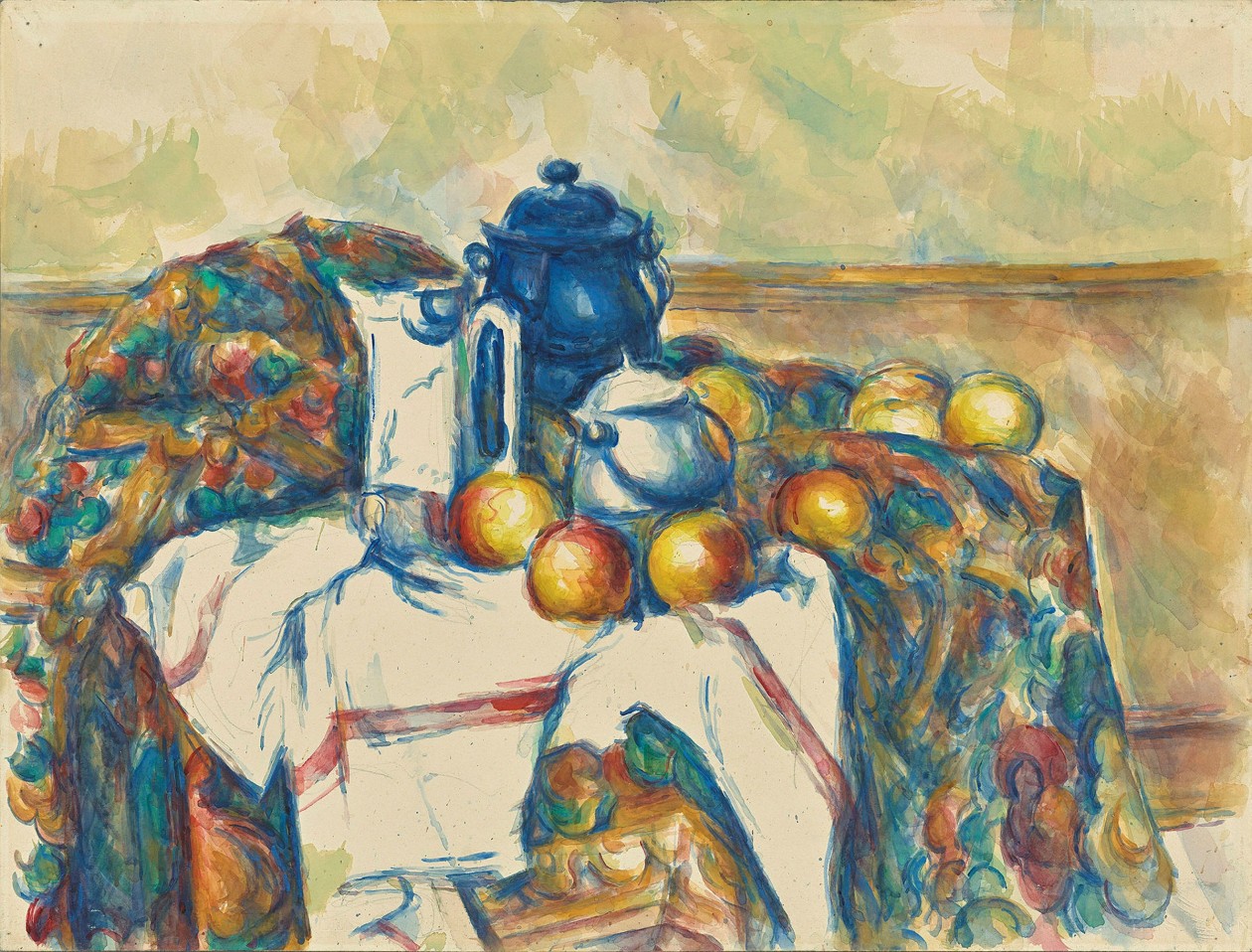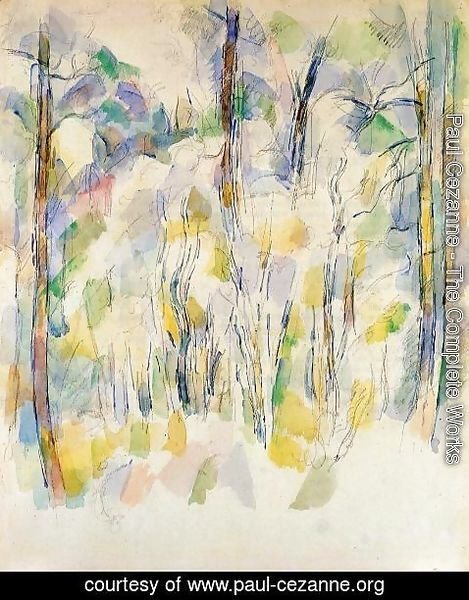Paul Cézanne (1839 – 1906) was a French artist and Post-Impressionist painter. His paintings show his mastery of design, color, composition, and draftsmanship. Cézanne also explored the complexity of human visual perception through his artworks.
This summer, MoMA (The Museum of Modern Art) exhibits Cézanne Drawing featuring more than 250 rarely shown Cézanne’s works in pencil and watercolors.

Paul Cézanne, ‘Still Life with Blue Pot’ (1900-06), pencil and watercolour on paper © The J Paul Getty Museum. https://www.ft.com/
Many of Cézanne’s drawings depict his favorite objects, such as things on his kitchen table, his wife and son, clocks and lamps, the scenery of Mont Sainte-Victoire or dense forests; and the narratives from his own imagination. His drawings are vibrant through their translucency of layered washed watercolor, blurred lines, and beautiful colors. Try to look at ‘Still Life with Blue Pot’ (1900-06). His composition is almost similar to the naturalism and impressionist painters, but his brushstrokes are more sensitive and experimental. Indeed, Cézanne built the bridge between late 19th century Impressionism and the early 20th century’s new line of artistic inquiry, Cubism.

Paul Cézanne, ‘In The Woods2’, https://www.paul-cezanne.org/
Cézanne’s drawings are also related to his exploration of visual perception. For him, “Drawing is merely the configuration of what you see.” He believed that drawing practice can teach him “to see well.” In Western Philosophy, there is a close relationship between seeing, looking, and knowing. What we know is what we see. Visual perception becomes the foundation of observation and modern scientific experiments.
Cézanne Drawing exhibition offers the opportunity to dive into the world through Cézanne’s eyes. This exhibition is on view at MoMA, New York City from Jun 6–Sep 25, 2021.
Cézanne Drawing | MoMA EXHIBITION
